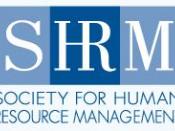Human resource management is a set of practices or techniques about managing people in an organisation as effectively as possible for the good of the employees, the company and society. HRM is also a managerial function or department within an organisation, this function or department is becoming important to organisations in their efforts to manage people as effectively as possible.
Human resource management includes a verity of activities, some of these can be seen as staffing needs; whether to use independent contractors or hire new employees to meet their needs, recruiting and training the best employees, ensuring they are high-performers, dealing with performance issues. Also ensuring the personnel and management practices conform to the various regulations. Other activities include managing the approach to employee benefits and compensation, employee records and personnel policies. These policies are often in the form employee manuals, which all employees should have.
HRM can also be useful because managing people well may influence so many outcomes in an organisation, such as profitability, productivity, employee involvement and investor return, these are all important to the stakeholders, organisation itself, employees, stockholders, customers and society.
At the beginning of the 20th century, Fredrick W. Taylor helped shape management practices and had a major impact on how firms manage HR. Trained as an engineer, F.W.Taylor emphasised the importance of developing precise analytical schemes to select, train, evaluate, and reward workers for the purpose of motivating them, controlling their behaviours, and improving their behaviours. But during the second quarter of the century, the focus shifted to acknowledging the importance of the work group's influence on employees. Elton Mayo and his work at the Hawthorne Plant, focused on the improving individual productivity by experimenting with changing the work groups composition and incentive schemes and also its environmental conditions, such as lighting and...


